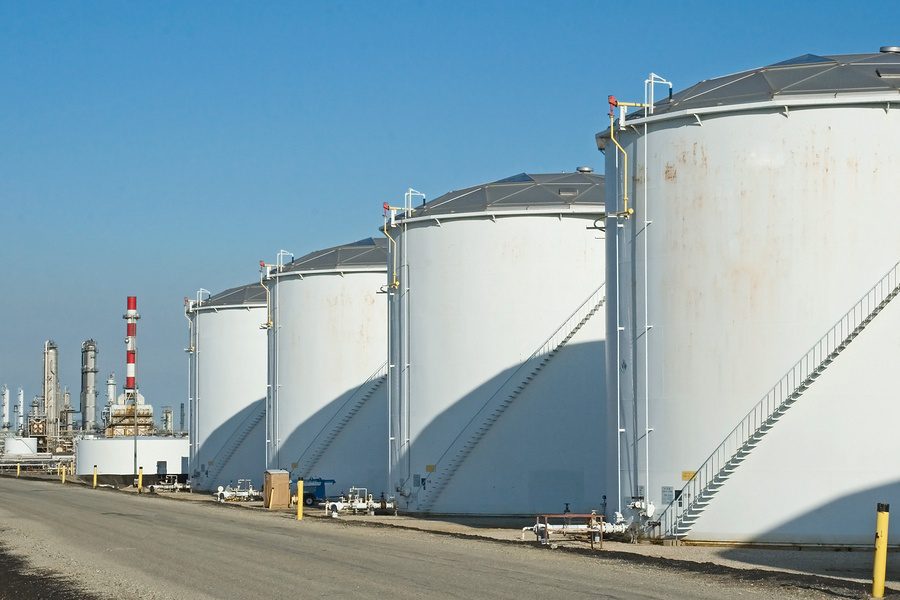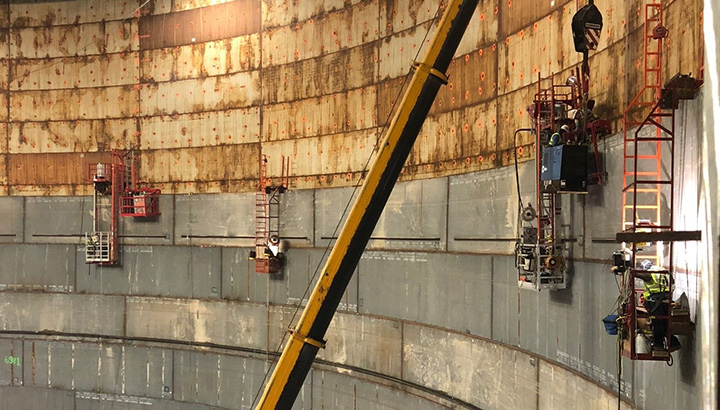All About Welding Examination: Trick Perks for Your Jobs
Welding evaluation plays a vital role in the construction and production markets. It guarantees that bonded joints satisfy quality and safety standards. By determining problems early, projects can stay clear of significant delays and economic losses. Following sector guidelines not only safeguards the integrity of the end product yet likewise builds trust fund among stakeholders. Understanding the subtleties of this process discloses fringe benefits that can impact task results substantially. What are these benefits?
Recognizing the Welding Assessment Process
Although welding is an essential element in various markets, the examination process is vital to ensure top quality and security. This process includes a collection of organized analyses developed to recognize any potential problems that might endanger the honesty of welded joints. Inspectors evaluate welding procedures and certifications to confirm conformity with industry requirements.
Following this, aesthetic inspections are carried out to analyze the general look and finish of welds. Non-destructive screening techniques, such as radiographic or ultrasonic testing, may additionally be used to discover interior problems without harming the material. Documentation plays an important function, as it supplies a record of findings and evaluations, confirming traceability and accountability.
Ultimately, understanding the welding examination procedure fosters self-confidence in the quality of the completed product, lowers the risk of failures, and boosts total job success in various applications, from construction to manufacturing. API 650 Welding Inspection.
Usual Kinds of Welding Problems
Welding problems can greatly influence the stability and performance of bonded structures, as they might cause failures under stress or damaging conditions. Usual sorts of welding problems consist of fractures, porosity, incomplete blend, and slag addition. Cracks can create because of thermal tensions or inappropriate cooling, compromising the joint's stamina. Porosity refers to the visibility of gas bubbles trapped in the weld, which can damage the joint and decrease ductility. Insufficient combination takes place when the weld metal does not properly bond with the base product, resulting in weak areas. Slag inclusion occurs when non-metallic impurities end up being trapped within the weld, causing a decrease in structural stability. Recognizing these defects early via inspection is crucial for preserving quality and making sure security in bonded frameworks. Recognizing these usual issues permits improved welding methods and boosted project results.
Relevance of Compliance With Market Specifications
Compliance with sector standards is necessary for keeping structural stability in welding jobs. Following these standards not only reduces responsibility threats but also improves the general top quality of the ended up job. This alignment fosters count on among stakeholders and assurances that forecasts fulfill both safety and security and efficiency assumptions.
Ensuring Architectural Integrity
Guaranteeing structural integrity is paramount in any construction or manufacturing project, as adherence to sector requirements acts as a foundation for security and dependability. Compliance with these standards guarantees that welding processes meet strenuous requirements, which is crucial for the sturdiness of structures. Routine welding evaluations verify that products and strategies align with established standards, protecting against possible failings that might compromise honesty. In addition, complying with industry standards advertises uniformity in high quality, which is crucial for maintaining public count on building and construction methods. By prioritizing architectural stability through persistent adherence to criteria, companies can enhance the total efficiency of their projects, leading to more secure atmospheres and long term possession lifespans. Inevitably, this dedication shows a proactive technique to high quality guarantee in welding practices.
Reducing Responsibility Risks
Sticking to market criteria significantly mitigates obligation risks related to welding projects. Conformity with developed guidelines warranties that welds meet safety and security and performance requirements, reducing the probability of failures that might cause accidents or lawsuits. This aggressive method not just protects the workforce yet also safeguards the monetary passions of the company. Low-grade practices or insufficient assessments can lead to costly repair services, lawful disputes, and damage to track record. By applying rigorous welding examinations, business show their commitment to quality and security, eventually decreasing direct exposure to potential claims. On top of that, adherence to guidelines enhances trust fund amongst customers and stakeholders, as it shows a dedication to maintaining high standards throughout the project lifecycle. Decreasing liability dangers is necessary for lasting service sustainability.
Enhancing Task Top Quality
Strenuous welding assessments not only reduce liability threats yet likewise play a critical role in boosting general job quality. By sticking to market standards, these inspections guarantee that welds meet defined criteria for resilience, toughness, and security. Compliance with developed guidelines aids determine issues early, minimizing the likelihood of pricey rework or project hold-ups. Consistent high quality control cultivates trust amongst stakeholders, consisting of clients and regulative bodies, which can lead to duplicate business and positive recommendations. Ultimately, a commitment to top notch welding practices not only enhances the honesty of the end product however learn the facts here now additionally upholds the credibility of the company entailed. Consequently, extensive examinations serve as a cornerstone for successful and sustainable task end results.
Benefits of Early Detection of Issues
Early detection of welding issues provides significant advantages, particularly regarding cost savings on repairs. By recognizing troubles prior to they intensify, organizations can improve the architectural integrity of their tasks. This aggressive strategy not just lessens monetary expenditures but additionally advertises security and reliability in welded frameworks.
Expense Cost Savings on Repair Works
Spotting welding issues promptly can bring about considerable cost financial savings on fixings. Early recognition of problems enables for targeted interventions, minimizing the degree of damages and protecting against pricey, substantial repair services later on. When troubles are attended to during the first phases of a project, sources are utilized extra effectively, reducing both labor and product costs. In addition, timely examinations can stop project hold-ups, which frequently sustain added expenditures. By correcting concerns early, business can stay clear of the monetary worry connected with rework, service warranty insurance claims, and possible safety threats. Ultimately, buying aggressive welding evaluations cultivates a more affordable approach to project administration, making certain that budgets stay undamaged while maintaining the high quality and integrity of the final product.
Boosted Architectural Integrity
Making sure the architectural honesty of welded elements depends upon the prompt recognition of potential problems. Early discovery throughout the welding examination process enables the instant correction of issues such as cracks, voids, or incorrect combination. Resolving these concerns promptly not only enhances the stamina and longevity of the weld but also reduces the danger of disastrous failings throughout the life span of the framework. Regular inspections add to a much more trustworthy assessment of weld quality, guaranteeing conformity with sector criteria. By prioritizing welding evaluations, task managers check over here can maintain a higher degree of safety and security and performance, eventually bring about successful project results. Enhanced architectural integrity shows the commitment to high quality and adherence to best methods in welding.
Cost-Effectiveness of Welding Inspections
While lots of firms might see welding assessments as an extra cost, they typically show to be an economical investment in the long run. By recognizing flaws early, these assessments can avoid costly fixings or replacements that may emerge from unnoticed issues. This aggressive technique not only conserves money yet likewise reduces project delays, making certain that timelines are abided by.

Premium welding examinations contribute to enhanced performance, leading to less rework instances and improved performance. The decrease in material waste and labor costs connected with remodeling defective welds adds to the economic advantages.
Purchasing comprehensive assessments additionally enhances the overall high quality of the final item, which can bring about increased customer complete satisfaction and repeat service. Inevitably, the first prices connected with welding inspections are typically exceeded by the long-lasting cost savings and advantages they supply, making them a smart option for any type of welding job.
Enhancing Security and Dependability in Welding Projects

Welding evaluations play an important role in boosting safety and security and dependability within welding projects, as they methodically recognize prospective risks and weaknesses in welds. By using certified inspectors, companies can ensure that welding processes comply with market standards and regulatory needs. This positive approach decreases the danger of weld failings, which can result in accidents, costly repairs, and task delays.
Evaluations give vital documentation that verifies compliance and high quality guarantee, promoting trust fund between stakeholders. Normal assessments during numerous project stages allow for the timely discovery of issues, making it possible for corrective actions prior to they escalate. Furthermore, the understandings gained from inspections contribute to constant renovation in welding methods, enhancing general job end results. Ultimately, robust welding examination protocols not only safeguard employees yet also protect financial investments, assuring that tasks are completed successfully and satisfy the greatest safety and security and integrity standards.
Frequently Asked Concerns
What Credentials Should a Welding Assessor Have?
A welding assessor should possess relevant accreditations, such as Licensed Welding Examiner (CWI), in addition to considerable knowledge of welding codes, products, and processes. API 650 Welding Inspection. Experience in the field and strong analytical skills are also important for effective evaluations
How Frequently Should Welding Inspections Be Carried Out?
Welding evaluations ought to be conducted frequently, usually previously, during, and after the welding process. The regularity might depend upon job specifications, regulatory needs, and the intricacy of the welds to ensure structural honesty and safety and security.
Can Welding Inspections Be Done Remotely?
Welding inspections can without Read Full Article a doubt be executed remotely, using innovative technologies such as drones, video cameras, and ultrasonic screening equipment - API 650 Welding Inspection. This approach permits effective tracking while reducing the need for physical existence at the site
What Equipment Are Utilized in Welding Inspections?
Welding examinations make use of numerous tools, consisting of ultrasonic testers, magnetic fragment testers, visual assessment devices, radiographic tools, and calipers. Each device serves a details purpose to guarantee weld integrity, quality, and conformity with industry criteria.
Exactly how Do I Choose a Welding Inspection Solution?

To choose a welding examination service, one must evaluate credentials, experience, and accreditations. Furthermore, reviewing customer testimonials and requesting in-depth service summaries can help ensure the picked service fulfills specific task needs effectively.
By prioritizing welding evaluations, task supervisors can keep a higher level of safety and performance, ultimately leading to effective project end results. Welding inspections play an essential role in enhancing security and dependability within welding tasks, as they methodically recognize potential risks and weak points in welds. A welding examiner must have pertinent certifications, such as Licensed Welding Inspector (CWI), along with comprehensive expertise of welding materials, processes, and codes. Welding assessments need to be carried out on a regular basis, commonly in the past, during, and after the welding procedure. Welding examinations make use of numerous devices, consisting of ultrasonic testers, magnetic fragment testers, visual assessment tools, radiographic tools, and calipers.